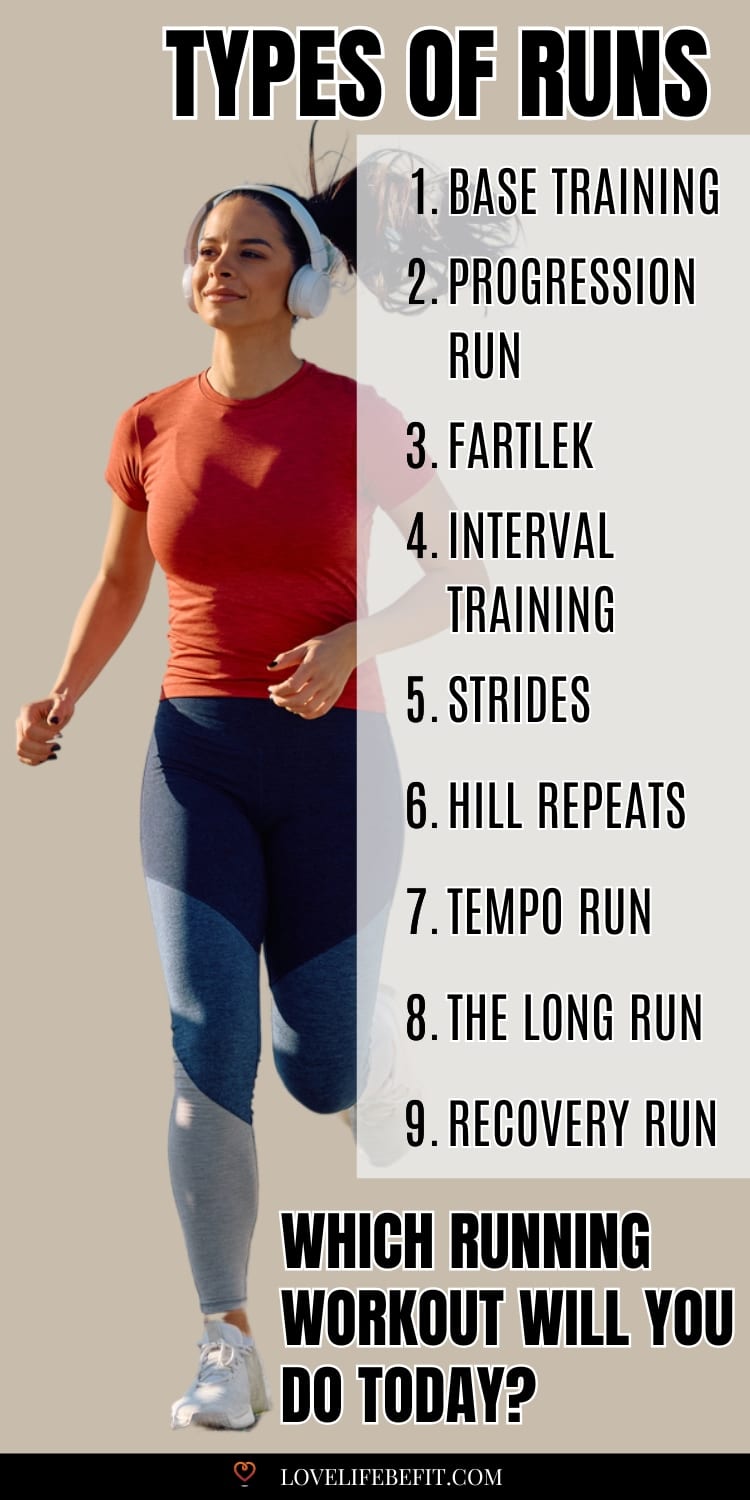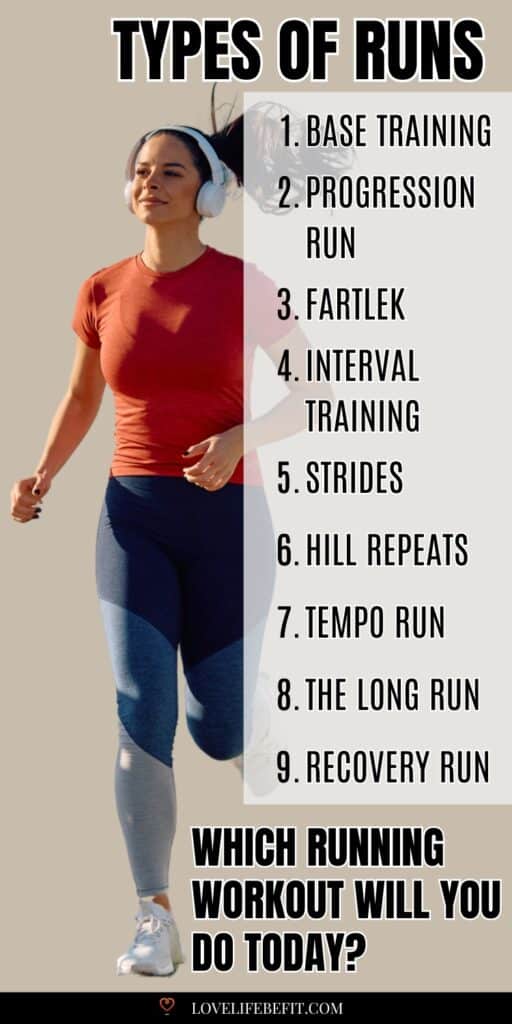9 Different Types Of Running Workouts
Going for a run? Do you have favorite routes and run at a typical training pace? Maybe if you’re feeling good, you’ll run a bit faster. This is the approach of most runners: there’s little thought given to the type and reason for the running workout.
Always running the same route at the same training pace, or constantly running as fast as you can, limits you’re ability to improve. To become a better runner, incorporate these different types of running workouts into your training regimen.

1. Base Training
Many runners train too fast. If you’re constantly running at your maximum pace, there’s nothing in the tank to push harder on speed intervals, the sessions that help you run faster. The bulk of your runs should be at a base training pace, an easy pace that improves your aerobic capacity and endurance.
Often referred to as Zone 2 training, where you’re running at 60 to 75% of maximum heart rate, base training runs are at an easy conversational pace. Find out more about base training.

2. Progression Run
A progression run starts at a relatively easy pace and gets faster as you progress through the run. The goal is to achieve a negative split, where the second half of your run is faster than the first half. It’s an excellent way to improve your pacing if you tend to start too fast and blow up halfway through your run.
A progression run is a broad term open to personal interpretation. You can split your run into two sections and run the second half at a constant pace slightly faster than the first half. Alternatively, try to increase your speed from very easy to progressively harder until you’re running your last few miles at race pace.
3. Fartlek
Fartlek is an excellent and fun introduction to speed training for beginner runners, and a valuable tool for anyone running off-road. The aim is to run to feel. You’re alternating pushing hard and easing off.
For example, you may push hard to the next tree or the brow of a hill, then jog for a few minutes to recover before going again. Fartlek is a Swedish word meaning “speed play” and is popular among orienteers who constantly have to adjust their pace to cope with varying terrain.
4. Interval Training
Interval training is a structured speed training technique that involves repeating set distances of hard efforts and predetermined recovery periods. The number of repetitions, the set distance, pace, and the recovery period depend on your experience level and training goals.
Repeats of shorter distances, such as 100m and 200m, build strength; longer distances, such as 800m or mile repeats, build endurance. Specific training plans for different race distances often include appropriate intervals.
Interval training can be very tough on your body and should be approached with caution if you’re a beginner runner. It’s best to establish a solid foundation of running for at least six months before incorporating interval training into your regimen.
5. Strides
Everyone should be running strides! They’re short bursts of fast, relaxed running that help both your speed and your running form. Ease into a fast pace over about 5 seconds, maintain it while focusing on staying relaxed, and then continue at this pace until it feels natural to slow to a stop. It’s all over in 20 to 30 seconds.
Discover more about running strides, from warming up to mastering the technique.
6. Hill Repeats
Hill repeats are basically intervals up hills. The focus is typically on building strength, so they tend to be short intervals. Find a suitable hill, run hard to the top, jog back down, and repeat. You can run uphill for a set time with a set recovery period and try to reach the same high point each time.
The steepness of the hill will depend on your aims. Short, steep hill reps build strength; shallower hills are better for more sustained efforts.
7. Tempo Run
A tempo run is where you maintain a comfortably hard pace. It’s a speed and endurance session. You’re running at a pace you can maintain for at least 20 minutes to up to one hour. That’s typically 25 to 30 seconds per mile slower than your 5K race pace.
Tempo running helps you run faster and improves mental toughness. It’s a good way to get race-ready! Give these tempo workouts a try.
8. The Long Run
The long run helps you run more efficiently and should be part of every runner’s training plan, from 5K to marathon or ultra runners. You’re building resilience both physically and mentally for running greater distances.
It’s essential to build distance gradually, allowing your body time to adapt and strengthen. As a rough guide, increase distance by only 10 to 15% per week.
9. Recovery Run
Slumping on the couch for a few days after a hard run or race may be tempting, but your body will benefit from an easy recovery run. It’s a type of active recovery that helps to decrease inflammation and muscle soreness.
Keep your recovery runs short, just 20 to 30 minutes at a slow, easy pace. If it feels hard, you’re running too fast. For some runners, adopting a walk/run routine is best for recovery.
Inspired to try some different types of running workouts? You may like these running workouts for speed and endurance.






